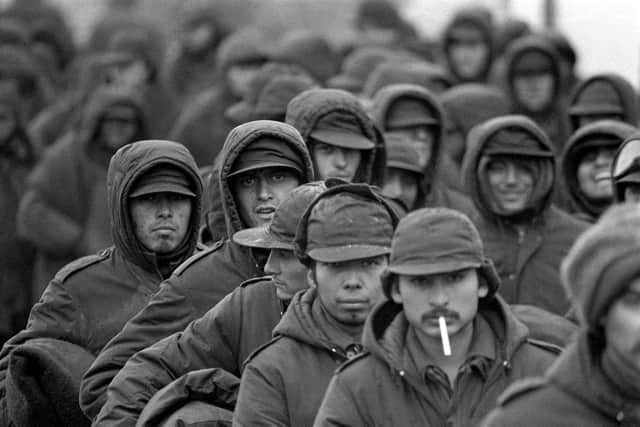Falklands 40: Headlines from The News, Portsmouth on June 15, 1982 as plans are made to protect regained islands
and live on Freeview channel 276
Navy stays to back garrison
Naval forces, estimated by some sources to number about 10 per cent, of the Royal Navy, will need to be kept in the South Atlantic to protect the newly regained Falkland Islands.
Contingency plans are being produced by the navy for a number of frigates to be stationed in the South Atlantic to protect against aircraft and submarine attack on shipping supply routes from Ascension Island.


Advertisement
Hide AdAdvertisement
Hide AdPortsmouth's contribution could well be the Type 42 guided-missile destroyers HMS Birmingham - completing post-refit trials - and HMS Southampton, whose trials and setting to work of equipment has been accelerated (writes Reg Betts, The News Defence Correspondent).
These two ships would provide air defence with their Sea Dart missile systems.
The frigates would be Devonport-based, preferably including any fitted with the highly-successful Sea Wolf surface-to-air missile system.
One, if not two, of the Navy's hunter-attack nuclear submarines is likely to be keeping silent watch.
Advertisement
Hide AdAdvertisement
Hide AdMaintaining repair and maintenance facilities in the Falklands will be essential, and two converted merchant ships with Royal Navy crews are on the way to provide these facilities.
Accommodation for soldiers and sailors in the bitter climate will create logistic problems, and it will be interesting to see whether there is renewed interest in converting the old aircraft carrier HMS Bulwark into a floating accommodation ship.
More ammunition for the garrison is on the way to the Falklands, and the constant need for fuel, supplies, and food means that many of the requisitioned merchant ships will continue to ply between Britain, Ascension Island, and the Falklands.
Sorrowing Portsmouth rejoices
Relief and rejoicing swept through the city of Portsmouth today as the news came through that the Argentine forces on the Falklands have surrendered.
Advertisement
Hide AdAdvertisement
Hide AdMixed with the happiness, there was pride in the achievement of our armed forces, sorrow at the losses already suffered, and a firm conviction that the city's sacrifice was worthwhile.
The leader of Portsmouth City Council John Marshall said: ‘My feelings are of relief that it is over, great sorrow at the loss of life - bearing in the mind that some lives are permanently shattered and some hearts permanently broken - and great pride in the whole achievement to transfer 10,000 men more than 8,000 miles in so short a time.’
14,800 Argentine troops give up
An estimated 14,800 Argentine troops were involved in the Falklands surrender, some 6,000 more than the total British land forces, according to authoritative sources in Whitehall today.
At Port Stanley, 11,000 Argentine prisoners were today under British Army guard, their weapons piled up.
Advertisement
Hide AdAdvertisement
Hide AdVictory has brought new problems for the British commander, Major-Gen Jeremy Moore - many of the Argentines captured at Port Stanley are said to be ‘in a bad way’, suffering from exposure, exhaustion, and frostbite.
The Argentine surrender was announced today after a dramatic message was received in London from General Moore.
Disabled children cheer Anne
Cheering children from St Francis Special School at Gosport greeted Princess Anne when she visited south Hampshire today for the second time in a month.
She was at the Royal Navy's Drafting, Pay and Records office to open a new £1.25m computer block.
Advertisement
Hide AdAdvertisement
Hide AdThe Princess, who is Chief Commandant of the Women's Royal Naval Service, flew into HMS Sultan by helicopter and was driven to HMS Centurion where the parade ground was lined with service and civilian personnel and their families.
For most of the St Francis youngsters it was their first glimpse of a Royal Princess.